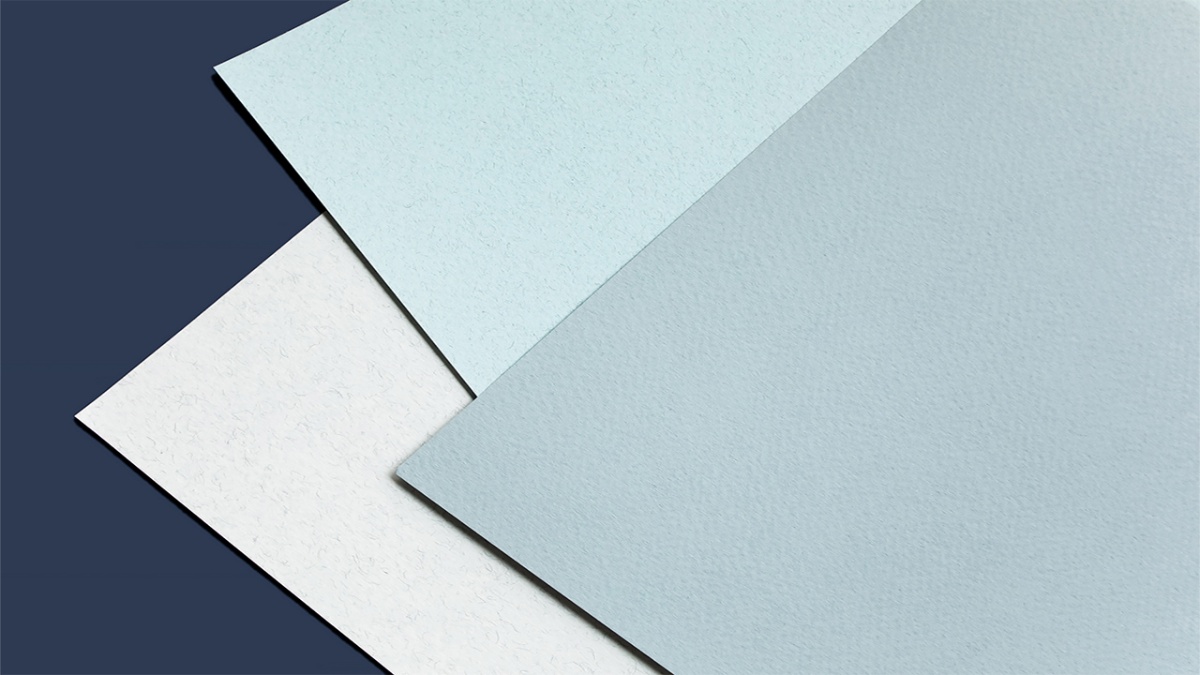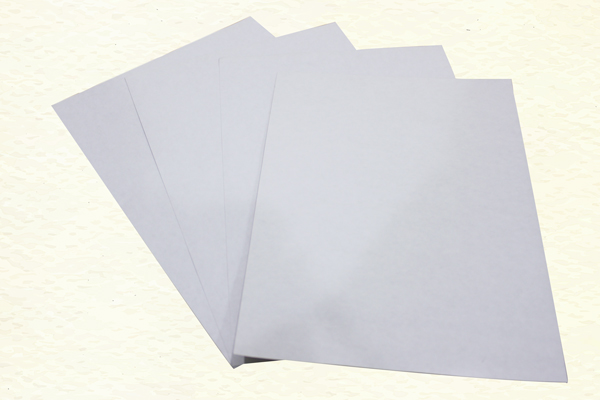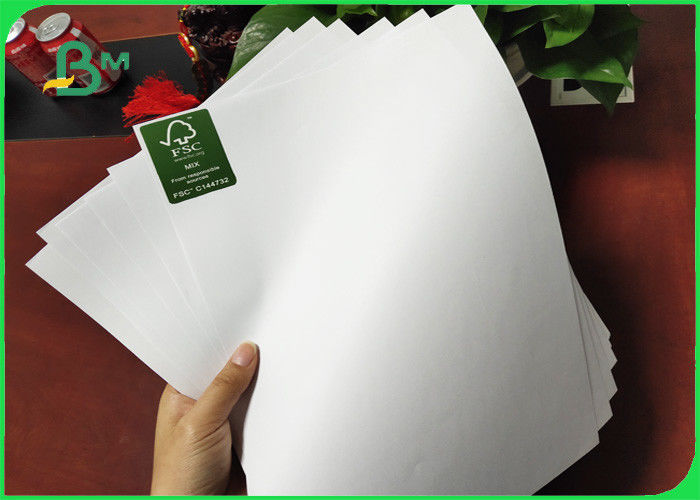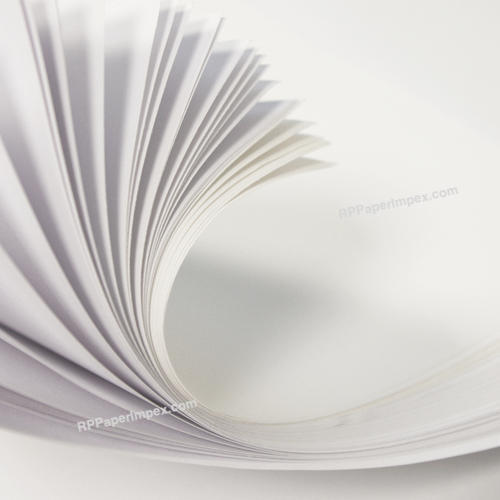Why Coating Woodfree Paper?
Introduction to Woodfree Paper Coating
Woodfree paper is a type of paper that is commonly used for various professional activities, such as art and archiving. It is known for its high quality, durability, and ability to resist acid erosion and degradation over time. Woodfree paper is not necessarily free from wood pulp, but it signifies the elimination of lignin using a chemical process, making it renewable and biodegradable.
Coating woodfree paper is an important process that enhances its appearance, durability, and printability. The coating is applied onto the surface of the paper to improve its smoothness, brightness, and ink absorption properties. Coating woodfree paper offers several benefits and is widely used in industries such as printing, publishing, and advertising.
What is Woodfree Paper?
Woodfree paper is a type of paper that is produced without using unbleached manually groundwood fibers. The lignin and impurities in the wood pulp are bleached out using chemicals like hydrogen peroxide or sodium hydrosulphite. This process increases the price of the paper but enhances its whiteness and durability.
Woodfree paper is made from a blend of cotton and linen rags or pulp from non-wood plant fibers like bamboo or sugarcane. It is commonly used for high-quality printing purposes, such as resumes, business cards, and certificates, due to its superior quality and durability.
Importance of Coating Woodfree Paper
Coating woodfree paper is essential to enhance its appearance, durability, and printability. The coating process involves applying a layer of coating material onto the surface of the paper. Coated woodfree paper has a smoother surface compared to uncoated paper, which results in sharper and more vibrant printed images.
The coating helps to improve the ink absorption properties of the paper, allowing for better color reproduction and sharper text. It also enhances the paper’s resistance to smudging and smearing, making it ideal for high-quality printing applications.
In addition, coated woodfree paper offers better durability and longevity compared to uncoated paper. The coating provides a protective barrier against moisture, dirt, and other contaminants, ensuring that the printed material remains in pristine condition for a longer period.
Difference between Coated and Uncoated Paper
Coated and uncoated paper have distinct characteristics and are used for different purposes. Coated paper has a surface coating that improves its appearance and printing surface. It is available in various finishes, including gloss, silk, matt, and uncoated. Coated woodfree paper contains less than 10% mechanical pulp and uses mineral coatings for printability. It is commonly used for illustrated books, posters, magazines, and advertising materials.
On the other hand, uncoated paper is more absorbent and lacks coatings for ink. Uncoated woodfree paper is widely used for various applications, such as office stationery, photocopying, and writing. It is available in different sub-grades, including lightweight for directory papers and standard for different end-uses.
Supercalendared paper is another type of uncoated woodfree paper that offers a smooth finish similar to coated paper without additional coating. It is commonly used in magazines, catalogues, flyers, and coupons.
Overall, the choice between coated and uncoated paper depends on the specific requirements of the project. Coated paper provides a more polished and vibrant finish, while uncoated paper offers a more natural and tactile feel.
In summary, woodfree paper coating plays a crucial role in enhancing the appearance, durability, and printability of the paper. The coating process improves the smoothness, ink absorption properties, and resistance to moisture and contaminants. Coated woodfree paper is widely used for high-quality printing applications, while uncoated paper is suitable for various office and writing needs. Choosing the right type of paper, whether coated or uncoated, is essential to achieve the best results for specific project requirements.
Benefits of Using Coated Woodfree Paper
Coated woodfree paper offers numerous advantages over uncoated paper, making it the preferred choice for many professional applications. Whether you’re printing high-quality magazines, posters, or advertising materials, coated woodfree paper can provide you with unmatched results. In this section, we will explore the benefits of using coated woodfree paper, including enhanced appearance and durability, as well as its sustainability aspects.
Advantages of Coated Paper
Coated woodfree paper stands out from uncoated paper due to its superior qualities. The paper’s surface is enhanced with a coating, which provides several advantages in terms of print quality and durability. Here are some key benefits of using coated paper:
1. Improved Print Quality
Coated paper offers exceptional print quality, thanks to its smooth and uniform surface. The coating prevents the ink from being absorbed too quickly, allowing it to sit on top of the paper, resulting in vibrant and sharp images. The colors appear more vibrant, and the details are more defined, making your printed materials visually appealing and professional-looking.
2. Enhanced Image Reproduction
When it comes to printing images, coated paper excels. The smooth surface of coated woodfree paper allows for excellent ink coverage and reduces dot gain, resulting in crisper and more detailed images. Whether you’re printing high-resolution photographs or intricate illustrations, coated paper ensures that your images come out vivid and true to life.
3. Optimal Color Saturation
Coated paper provides optimal color saturation, allowing your printed materials to stand out. The coating prevents the ink from spreading, resulting in sharper and more vibrant colors. This is particularly important for graphic designers and advertisers who rely on bold and eye-catching visuals to grab attention and convey their message effectively.
4. Improved Durability
The coating on coated woodfree paper adds an extra layer of protection, making it more resistant to wear and tear. The coating acts as a barrier against moisture, dirt, and smudging, ensuring that your printed materials retain their quality and durability over time. This makes coated paper ideal for projects that require long-lasting and highly presentable prints, such as catalogs, books, and brochures.
Enhanced Appearance and Durability
Coated woodfree paper is known for its exceptional appearance and durability. Whether you’re printing marketing materials or high-end books, using coated paper can significantly enhance the overall look and feel of your prints. Here’s why coated woodfree paper is favored for its enhanced appearance and durability:
1. Brighter White
Coated woodfree paper has a higher brightness level compared to uncoated paper. The coating process eliminates impurities and improves the paper’s whiteness, resulting in a clean and bright surface. The brighter white of coated paper enhances the contrast of your prints and ensures that colors appear more vibrant and true to life.
2. Smooth and Even Surface
The coating gives coated woodfree paper a smooth and even surface, reducing the visibility of paper fibers and imperfections. This smoothness provides an ideal canvas for printing, allowing ink to sit on top of the paper without being absorbed. The result is sharp and detailed prints with exceptional clarity.
3. Resistance to Yellowing
Coated paper is less prone to yellowing over time compared to uncoated paper. The coating acts as a protective layer, preventing the paper from reacting with external elements that can cause discoloration. This ensures that your prints maintain their original whiteness and remain visually appealing for longer periods.
4. Smudge and Moisture Resistance
Coated woodfree paper is more resistant to smudging and moisture compared to uncoated paper. The coating acts as a barrier, preventing ink from smearing or running when exposed to moisture. This makes coated paper suitable for prints that may come into contact with water or need to withstand handling.
Sustainability Aspects
In addition to its visual and durability benefits, coated woodfree paper also offers sustainability advantages. As the demand for environmentally friendly materials continues to grow, choosing coated woodfree paper can help reduce the environmental impact of your printing projects. Here’s why coated woodfree paper is a sustainable choice:
1. Renewable and Biodegradable
Wood-free paper, including coated woodfree paper, is made from sustainable fibers sourced from non-wood plant fibers like bamboo or sugarcane. These fibers are fast-growing and easily renewable, ensuring a constant supply without depleting natural resources. Additionally, coated woodfree paper is biodegradable, meaning it will naturally decompose over time without leaving a lasting environmental footprint.
2. Reduced Ecological Footprint
The production of coated woodfree paper involves a specialized process that eliminates lignin and other impurities. This process reduces the need for harsh chemicals and minimizes the release of pollutants into the environment. Furthermore, coated woodfree paper requires less energy and water during production compared to paper made from wood pulp, further reducing its ecological footprint.
3. Recycling and Sustainability Certifications
Coated woodfree paper is recyclable and can be repurposed into new paper products. Recycling reduces the demand for virgin fibers and helps conserve natural resources. Additionally, many coated woodfree papers carry sustainability certifications like the Forest Stewardship Council (FSC) certification, ensuring that the paper comes from responsibly managed forests.
In summary, coated woodfree paper offers a wide range of benefits, including improved print quality, enhanced appearance, and durability. Its sustainability aspects make it an environmentally friendly choice for those looking to reduce their ecological footprint. Whether you’re printing promotional materials, books, or magazines, coated woodfree paper provides the ideal surface for high-quality and visually appealing prints.
Types of Coatings and Application Techniques
Woodfree paper, with its high-quality characteristics, is often coated to enhance its appearance and performance. Coatings provide a smooth and glossy surface that improves printability and visual appeal. In this section, we will explore the different types of coatings available for woodfree paper and the application techniques used.
Matte, Gloss, and Satin Finishes
Woodfree paper coatings come in a variety of finishes, each offering unique characteristics and benefits. The most common finishes include matte, gloss, and satin.
Matte Finish: Matte coatings provide a non-reflective surface with a smooth and velvety texture. This finish is ideal for applications where glare or reflection needs to be minimized, such as in photography books or art prints. Matte coatings also offer excellent readability and are less prone to fingerprints and smudges.
Gloss Finish: Gloss coatings provide a high shine and reflective surface. They enhance the colors and details in printed materials, making them visually vibrant and appealing. Gloss-coated woodfree paper is often used in magazines, brochures, and promotional materials to attract attention and create a polished look.
Satin Finish: Satin coatings offer a balance between matte and gloss finishes. They provide a subtle sheen without excessive reflection, giving printed materials a sophisticated and elegant appearance. Satin-coated woodfree paper is commonly used in catalogs, magazines, and premium brochures.
Choosing the right finish depends on the specific requirements of the project, such as the desired aesthetic, readability, and intended use of the printed materials.
Application Methods for Different Coatings
The application of coatings to woodfree paper requires specialized techniques to ensure a consistent and flawless finish. There are several methods commonly used in the industry:
Roller Coating: Roller coating is a widely-used technique for applying coatings to woodfree paper. In this method, the paper is fed through a series of rollers, with the coating material being applied to the surface through the use of applicator rollers. The pressure and speed of the rollers determine the thickness and evenness of the coating.
Blade Coating: Blade coating, also known as direct gravure coating, involves the application of a coating material using a flexible metal blade or doctor blade. The blade spreads the coating evenly over the surface of the paper, removing any excess coating in the process. Blade coating is often used for high-speed production and can achieve a precise and controlled coating thickness.
Air Knife Coating: Air knife coating is a non-contact coating method where the coating material is applied using a high-velocity air stream. The air stream delivers the coating to the paper surface, ensuring a uniform distribution. This method is suitable for thin coatings and offers excellent control over coating thickness.
Spray Coating: Spray coating involves the application of a fine mist or spray of coating material onto the paper surface. This method is commonly used for smaller-scale or specialized applications. Spray coating allows for precise control over the coating thickness and can achieve a variety of finishes, from matte to gloss.
The choice of application method depends on factors such as the desired coating thickness, production volume, and equipment capabilities. Each method offers its own advantages and considerations, and it is crucial to select the most suitable technique to achieve the desired results.
Comparison with Other Paper Coatings
While woodfree paper coatings offer numerous benefits, it is important to consider other types of paper coatings and their respective advantages for specific applications.
Coated vs. Uncoated Paper: One key comparison is between coated and uncoated paper. Coated paper has a surface coating that enhances its appearance and printability, while uncoated paper lacks a coating and is more absorbent. Coated woodfree paper, with its smooth surface, is generally preferred for high-quality printing projects such as magazines, posters, and advertising materials. Uncoated woodfree paper, on the other hand, is more suitable for applications like letterheads, envelopes, and artwork that require a natural and tactile feel.
Comparison with Other Coatings: Woodfree paper coatings also differ from coatings used on other types of paper. For example, art paper (coated paper) is specifically designed to achieve high-end finishes with excellent whiteness, strength, and smoothness. Coated paper is commonly used for art albums, high-end illustrations, book covers, and calendars. Offset paper, another type of woodfree paper, is used for text-heavy prints and is preferred for its cost-effectiveness and good ink absorption.
When choosing the appropriate coating for woodfree paper, it is crucial to consider the specific requirements of the project, such as print quality, durability, aesthetics, and budget constraints. Each coating type offers its unique benefits and considerations, ensuring that the final printed materials meet the desired standards.
In conclusion, woodfree paper coatings play a vital role in enhancing the appearance and printability of high-quality paper materials. The choice of coating finish, application technique, and comparison with other coatings are crucial factors to consider when selecting the most suitable coating for a particular project. Understanding the different types of coatings and application methods allows for informed decision-making, ultimately resulting in outstanding printed materials that meet and exceed expectations.
Tables
Table 1: Comparison of Coated and Uncoated Paper
| Coated Paper | Uncoated Paper | |
|---|---|---|
| Surface Coating | Yes | No |
| Print Quality | Exceptional print quality, vibrant and sharp images | Good print quality, more absorbent |
| Ideal for | Magazines, posters, advertising materials | Office stationery, photocopying, writing |
| Availability | Available in various finishes (gloss, matte, etc.) | Available in different sub-grades |
| Durability | More durable due to the protective coating | Less durable, more susceptible to wear and tear |
Table 2: Comparison of Coating Methods
| Application Method | Description | Benefits |
|---|---|---|
| Roller Coating | Coating material applied using rollers; pressure and speed of rollers control thickness and evenness of coating | Widely-used technique; consistent and flawless finish |
| Blade Coating | Coating material applied using a flexible metal blade or doctor blade; excess coating is removed in the process | Precise and controlled coating thickness; suitable for high-speed production |
| Air Knife Coating | Non-contact coating method; coating material applied using a high-velocity air stream | Uniform distribution of coating; excellent control over coating thickness |
| Spray Coating | Coating material applied as a fine mist or spray onto the paper surface; precise control over coating thickness; achieves a variety of finishes, from matte to gloss; suitable for smaller-scale or specialized applications | Precise control over coating thickness; versatile in achieving different finishes |
These tables provide a visual representation of the comparison between coated and uncoated paper, as well as the different application methods for woodfree paper coatings. They help summarize and organize the information in a clear and concise manner, making it easier for readers to understand the key points and make informed decisions.
FAQs about Woodfree Paper Coating:
What is the importance of coating woodfree paper?
To enhance the appearance, durability, and printability of woodfree paper, a coating is applied to improve smoothness, brightness, and ink absorption properties.
How does coating woodfree paper differ from using uncoated paper?
Coated paper has a surface coating that enhances its appearance and printability, while uncoated paper is more absorbent and lacks coatings for ink.
What are the benefits of using coated woodfree paper over uncoated paper?
Coated woodfree paper offers advantages like improved print quality, enhanced appearance, optimal color saturation, and increased durability.
What are the types of finishes for woodfree paper coatings?
Woodfree paper coatings come in matte, gloss, and satin finishes, each offering unique characteristics for different aesthetic and readability needs.
What are the common application techniques for applying coatings to woodfree paper?
Roller coating, blade coating, air knife coating, and spray coating are common methods used for applying coatings to woodfree paper, each with its advantages and considerations.
In conclusion, woodfree paper coating enhances appearance and durability, making it a sustainable choice. Matte, gloss, and satin finishes offer variety, with different application methods. Choosing coated woodfree paper ensures quality and eco-consciousness in your printing projects. Coating woodfree paper provides protection and a professional look, making it a preferred option in various industries. Consider the benefits and types of coatings for your next printing endeavor for a polished and sustainable outcome.





